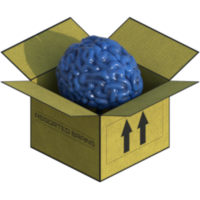So I did a Developer Journal and deleted it straight away due to sounding completely silly.
I called it "Project Will" and had to do with an MMO kind of thing that was a completely player-driven sandbox.
I want to outsource it but the costs will be ginormous. I want to develop it myself but I have absolutely no skills besides art. What do I do with this idea?
The dot points I posted:
An ambitious project to change the gaming landscape
Completely player driven
No NPCs, quests or built in lore
Online, persistent world
Combat is optional
Many occupations to take
Players will be able to build their own assets maybe making a profit
Players carve their own story
Native Oculus Rift support
Basically true sandbox
No intro or tutorials, straight into the action from the start
No mobs, players take care of that role
Griefing will somehow be disallowed
Players can opt out of PvP situations
Procedurally generated world as well as public events
Playable personas completely customizable from scratch, only with choosing their species and race
Multiple servers with different "procedurally generated" worlds respectively
There will be a limit in customization, materials in the world can only be used to customize
Limit in world size, maybe the size of France
Servers treated as "nations" somewhat, invading other servers maybe possible
Social interaction with other players very important but not mandatory
Players shape the lore themselves
Cave formations can be found and not instanced
World will start out with no buildings, players create their own using a separate application
Limits in what you can make, for setting purposes
Basically everything I thought of that has to do with the mechanics. The setting and style i'm not sure about right now.
Hope someone can help. :)













